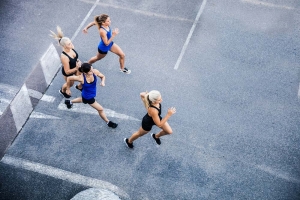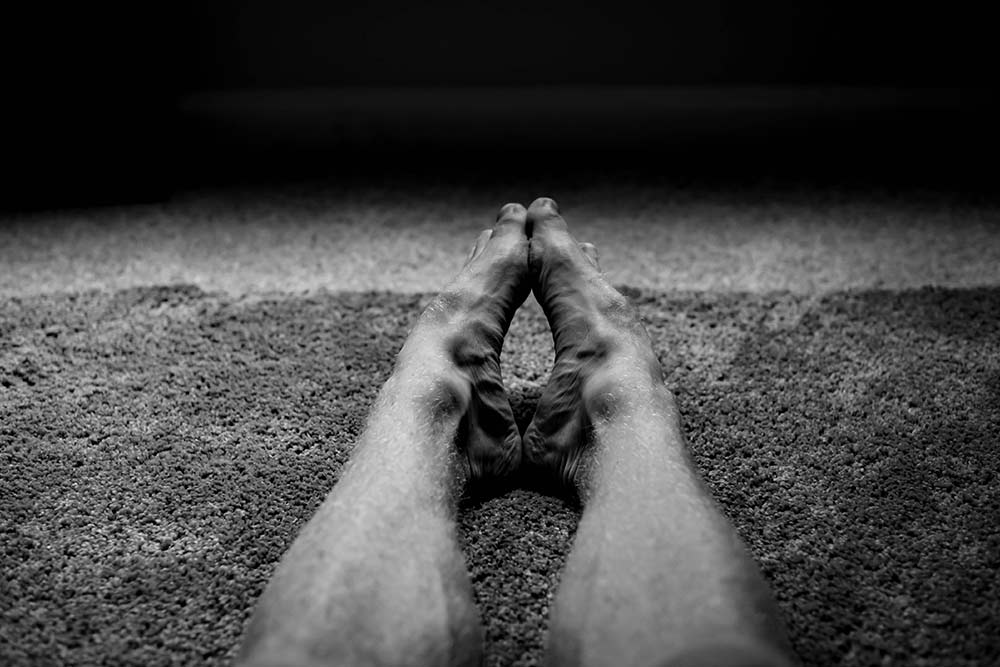Run/Walk Or Run Only?

Catherine O’Brien
When I first started running, my mom introduced me to the Galloway Method. This method of running, designed by Jeff Galloway, is a method which involves a combination of periods of running and periods of walking.
There has been a great deal of research on this method (and other run / walk methods) and it has been associated with decreased levels of injury in distance runners. In run / walk methods, the walking provides a clear respite from the high intensity of running. Walking is considered to be a low impact exercise and “is associated with lower energy expenditure and less physiological stress” (Hottenrott, Ludyga, Schulze, Gronwald, & Jagar, 2016, p.65).
Given this, one may expect that run / walk strategies would be less stressful for the heart and perhaps even be associated with decreased risk of cardiac accidents. Some previous research has demonstrated that running for a long period of time causes increases in key biomarkers associated with cardiovascular problems. Interested in the way run / walk strategies compare to run only strategies, Hottenrott, Ludyga, Schulze, Gronwald and Jagar (2016) investigated differences in performance, cardiac stress, and perceived levels of exertion between run/ walk strategy runners and run only strategy runners.
Related Article: Become A Runner At Every Age
This study focused on recreational marathon runners and not elite marathon runners. Baseline information and physical performance data were captured for all participants 1-week before the marathon. This included exercise testing as well as a blood sample. The blood sample was used to measure levels of creatine kinase MB isoenzyme (CK-MB), cardiac troponin (cTnI, and B-type natriuretic peptide (BNP). These biomarkers were selected because clinical research suggests that elevated levels of these markers are strong indicators of cardiac events (i.e. heart attacks). The same measurements were taken immediately after subjects crossed the finish line and 4 days after the marathon.
The Study
 Participants using the Run-Walk Strategy (RWS) used the water stations as a cue and switched from running to walking every 2.5km for the duration of the 26.2 miles. Each walking period was one-minute long. Participants using the run only strategy (RUN) did not have any walking periods. Throughout the race, metrics such as heart rate and speed were captured using heart rate monitors with GPS functionality.
Participants using the Run-Walk Strategy (RWS) used the water stations as a cue and switched from running to walking every 2.5km for the duration of the 26.2 miles. Each walking period was one-minute long. Participants using the run only strategy (RUN) did not have any walking periods. Throughout the race, metrics such as heart rate and speed were captured using heart rate monitors with GPS functionality.
Upon completion of the marathon, RWS participants reported less muscle pain and less fatigue compared to RUN participants. RUN participants reported more extreme levels of exhaustion than RWS participants. Interestingly, marathon times and average heart rates were similar across groups. These two findings were surprising to me as I expected RWS participant finish times to be significantly slower than RUN participants and average heart rates to be significantly higher for RUN participants.
The Findings
The lack of significant difference in finish time and average heart rates between the groups indicate that the level of cardiovascular strain was comparable between groups. This finding was supported by participants’ levels of BNP, CK-MB and myoglobin right after the marathon such that elevations of biomarkers associated with acute myocardial infarction were present in both RWS and RUN participants. That said, the study’s finding “suggests that the increase in cardiac biomarkers is a reversible, physiological response o prolonged exercise, indicating temporary stress on the myocyte and skeletal muscle rather than long-term damage to the heart” (p.68). In both RWS and RUN participants’ concentrations of these biomarkers returned to normal baseline levels when measured 4 after the marathon.
The Results
The results of this study are fascinating for distance runners for a couple of reasons.
1. The results demonstrated that run/walk strategies do not necessarily compromise finish time in the way one might expect.
2. For runners who prefer a run only strategy, the results revealed that consistent and prolonged running is no harder on the heart than run/walk strategies. Finally, the results suggest that the main advantage to a run/walk strategy to be decreased levels perceived level of exhaustion and muscle fatigue.
Takeaway
While this study does bring to light some interesting and applicable findings, it is necessary to mention the study’s limitations. While participants were randomly selected for participation in the study, they were not randomly assigned to RWS and RUN conditions. In this way, it is possible that there were pre-existing differences between RWS and RUN participants that could potentially influence results. This study was concerned with recreational runners so the results may be different for elite marathon runners.
Related Article: Who Takes The Cake At Pacing During The Marathon
You Might Like:
Ketogenic Diet and Running: What You Need to Know
If you have been around the health and fitness space over the last few years, then you would have heard about the ketogenic diet. You know that diet that helps with weight loss, metabolic disease,...Are Runners Less Likely to Develop COVID-19?
In this weird time of COVID-19, I have heard some strange suggestions regarding how you can prevent infection. Things like drinking colloidal silver, eating more oranges, and bathing in vinegar all come to mind. But...5 Ways to Get Rid of Shin Splints
Ryan Cross, Physiotherapist Pain related to “shin splints” is one of the most common ailments that athletes will complain about. Most runners have had a run-in with the dreaded shin splints at one time or...The Most Efficient Way to Run Faster
Evan Stevens, Sprint Coach Phosphocreatine is the most immediate source of energy we have access to run faster. It is separate from the glycolytic (anaerobic) and mitochondrial (aerobic) pathways and is a way to rapidly...Upper Body Workouts For Distance Runners
When we run long distances it is crucial to focus on form, function, and balance. Running efficiency is effected by all of these, and it will subsequently impact performance if not properly addressed. By limiting...Use the Hurdle Step to Test Your Running Mechanics
An easy way to test or observe your running mechanics is to use the Functional Movement Screen (FMS) Hurdle Step approach. As you will see in the video, this technique will enhance proper running mechanics,...Hottenrott, K., Ludyga, S., Schulze, S., Gronwalkd, T., and Jager, F-S. (2016). Does a run/walk strategy decrease cardiac stress during a marathon in non-elite runners? Journal of Science and Medicine in Sport, 19, 64-68.
Galloway, J. (2015). Run walk run: It began in 1974. Retrieved from http://www.jeffgalloway.com/training/run-walk/ on June, 6, 2017.










